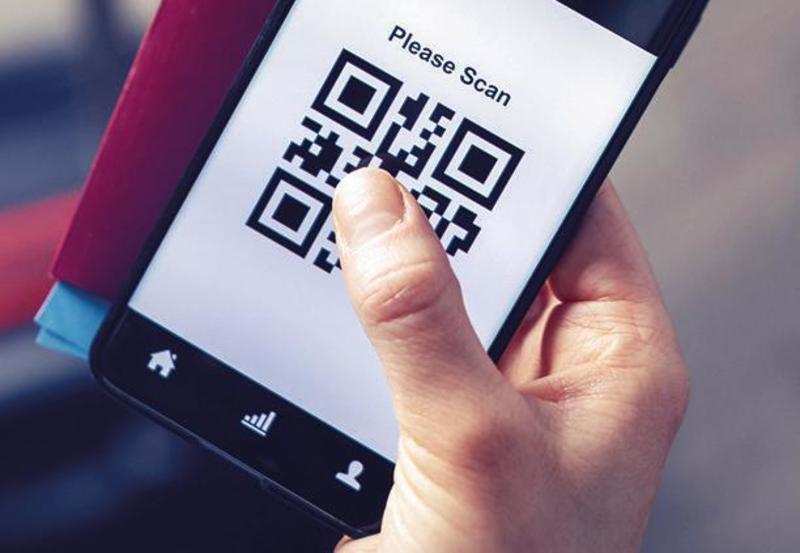

Among the many many adjustments led to by the pandemic is the widespread use of QR codes, graphical representations of digital knowledge that may be printed and later scanned by a smartphone or different machine.
QR codes have a variety of makes use of that assist folks keep away from contact with objects and shut interactions with different folks, together with for sharing restaurant menus, e mail listing sign-ups, automotive and residential gross sales data, and checking out and in of medical {and professional} appointments.
QR codes are a detailed cousin of the bar codes on product packaging that cashiers scan with infrared scanners to let the checkout pc know what merchandise are being bought.
Bar codes retailer data alongside one axis, horizontally. QR codes retailer data in each vertical and horizontal axes, which permits them to carry considerably extra knowledge. That additional quantity of knowledge is what makes QR codes so versatile.
Anatomy of a QR code
Whereas it’s straightforward for folks to learn Arabic numerals, it’s laborious for a pc. Bar codes encode alphanumeric knowledge as a sequence of black and white traces of varied widths. On the retailer, bar codes document the set of numbers that specify a product’s ID. Critically, knowledge saved in bar codes is redundant. Even when a part of the bar code is destroyed or obscured, it’s nonetheless doable for a tool to learn the product ID.
QR codes are designed to be scanned utilizing a digital camera, comparable to these discovered in your smartphone. QR code scanning is constructed into many digital camera apps for Android and iOS. QR codes are most frequently used to retailer net hyperlinks; nonetheless, they will retailer arbitrary knowledge, comparable to textual content or pictures.
Once you scan a QR code, the QR reader in your cellphone’s digital camera deciphers the code, and the ensuing data triggers an motion in your cellphone. If the QR code holds a URL, your cellphone will current you with the URL. Faucet it, and your cellphone’s default browser will open the webpage.
QR codes are composed of a number of elements: knowledge, place markers, quiet zone and optionally available logos.
The information in a QR code is a sequence of dots in a sq. grid. Every dot represents a one and every clean a zero in binary code, and the patterns encode units of numbers, letters or each, together with URLs. At its smallest this grid is 21 rows by 21 columns, and at its largest it’s 177 rows by 177 columns. Usually, QR codes use black squares on a white background, making the dots straightforward to differentiate. Nonetheless, this isn’t a strict requirement, and QR codes can use any shade or form for the dots and background.
Place markers are squares positioned in a QR code’s top-left, top-right, and bottom-left corners. These markers let a smartphone digital camera or different machine orient the QR code when scanning it. QR codes are surrounded by clean area, the quiet zone, to assist the pc decide the place the QR code begins and ends. QR codes can embody an optionally available emblem within the center.
Like barcodes, QR codes are designed with knowledge redundancy. Even when as a lot as 30% of the QR code is destroyed or troublesome to learn, the info can nonetheless be recovered. In truth, logos should not truly a part of the QR code; they cowl up a number of the QR code’s knowledge. Nonetheless, because of the QR code’s redundancy, the info represented by these lacking dots may be recovered by trying on the remaining seen dots.
Are QR codes harmful?
QR codes should not inherently harmful. They’re merely a option to retailer knowledge. Nonetheless, simply as it may be hazardous to click on hyperlinks in emails, visiting URLs saved in QR codes can be dangerous in a number of methods.
The QR code’s URL can take you to a phishing web site that tries to trick you into getting into your username or password for one more web site. The URL may take you to a legit web site and trick that web site into doing one thing dangerous, comparable to giving an attacker entry to your account. Whereas such an assault requires a flaw within the web site you might be visiting, such vulnerabilities are widespread on the web. The URL can take you to a malicious web site that methods one other web site you might be logged into on the identical machine to take an unauthorized motion.
A malicious URL may open an software in your machine and trigger it to take some motion. Perhaps you’ve got seen this conduct once you clicked a Zoom hyperlink, and the Zoom software opened and routinely joined a gathering. Whereas such conduct is ordinarily benign, an attacker may use this to trick some apps into revealing your knowledge.
It’s essential that once you open a hyperlink in a QR code, you make sure that the URL is secure and comes from a trusted supply. Simply because the QR code has a emblem you acknowledge doesn’t suggest it is best to click on on the URL it incorporates.
There’s additionally a slight likelihood that the app used to scan the QR code may comprise a vulnerability that enables malicious QR codes to take over your machine. This assault would succeed by simply scanning the QR code, even for those who do not click on the hyperlink saved in it. To keep away from this risk, it is best to use trusted apps offered by the machine producer to scan QR codes and keep away from downloading customized QR code apps.
FbTwitterLinkedin
Prime Remark
Akhil Venugopal
4 hours in the past
A pleasant little data






